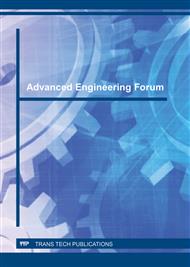p.1
p.10
p.22
p.29
p.42
p.51
p.57
p.61
p.68
Fatigue under Shear Stress by Using the Iosipescu Method for Carbon/Epoxy Composites
Abstract:
Composite materials have increasingly being used on aerospace industry due to its low density and high mechanical strength as well as high fatigue endurance. Consequently, increase attention is being devoted to study the fatigue behavior of these materials under cyclic loads. This work presents results on fatigue under shear stress by using the Iosipescu method. For fatigue testing a cured neat epoxy resin and a carbon fiber/epoxy composite having orientations of 0/90o and ± 45o in relation to the loading axis were tested by using the Iosipescu coupon. Firstly, the specimens were submitted to static tests in order to obtain the ultimate shear strength (τ) and the in-plane shear modulus (G12). Further batches of specimens were tested under definite levels of stress ratio as a function of number of cycles. So, the S-N curves were obtained. The maximum number of cycles was set at 120,000 cycles, which corresponds approximately to two times the life of a structural element from a civilian airplane. The stress ratio used was R=0.1 and R=0.5. At the limit of 120,000 cycles the epoxy resin exhibited a shear strength of 18 MPa, for a stress ratio of R=0.5, and 10 MPa for a stress ratio of R=0.1. The carbon fiber/epoxy 0/90o composite, at the limit of 120,000 cycles, showed a shear strength of 84 MPa for a stress ratio of R=0.5, and 64 MPa for a stress ratio of R=0.1. For the carbon fiber/epoxy ±45o composite, at the limit of 120,000 cycles, a shear strength of 105 MPa and 90 MPa, where found for a stress ratio of R=0.5 and R=0.1, respectively.
Info:
Periodical:
Pages:
22-28
Citation:
Online since:
January 2017
Keywords:
Price:
Сopyright:
© 2017 Trans Tech Publications Ltd. All Rights Reserved
Share:
Citation:


